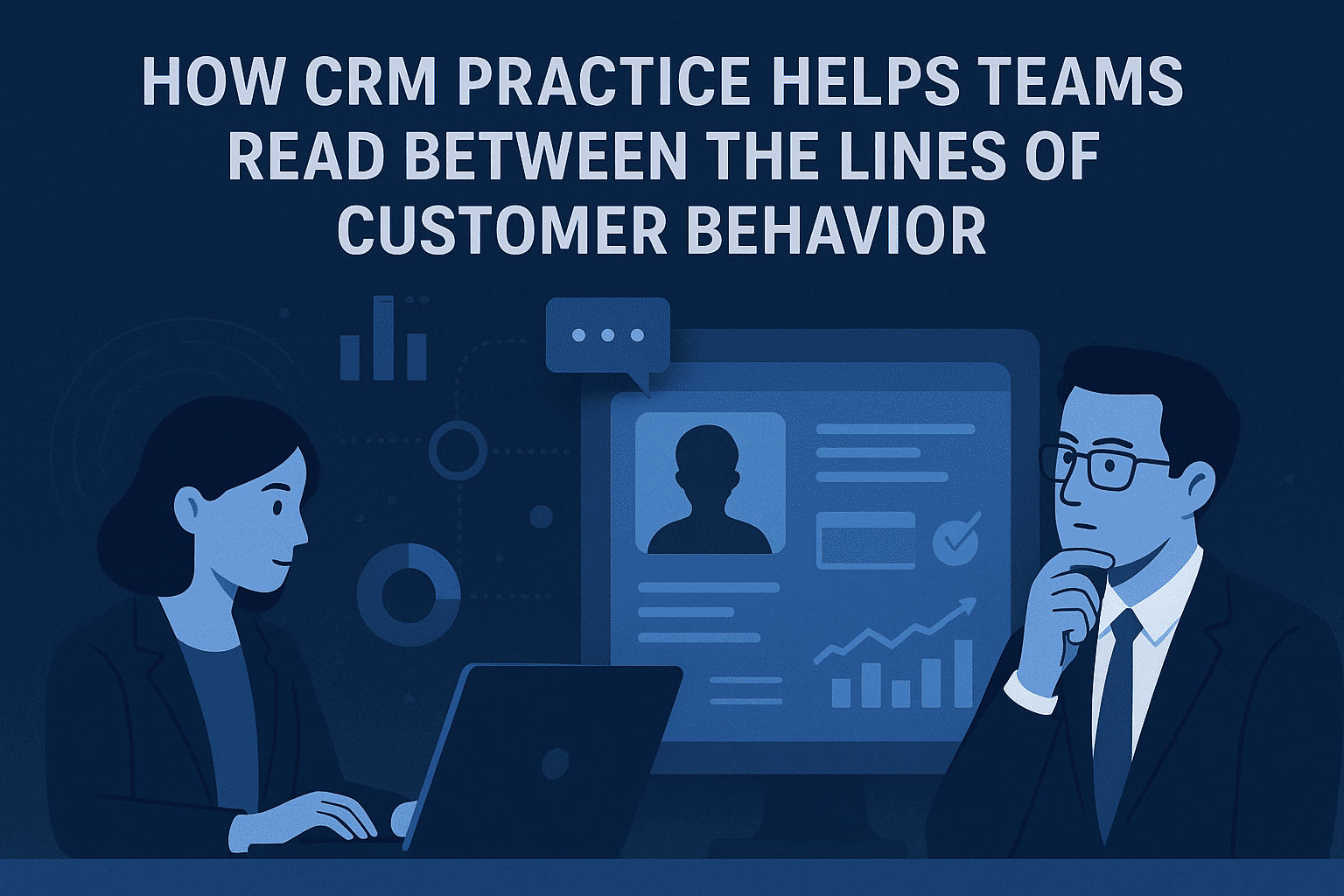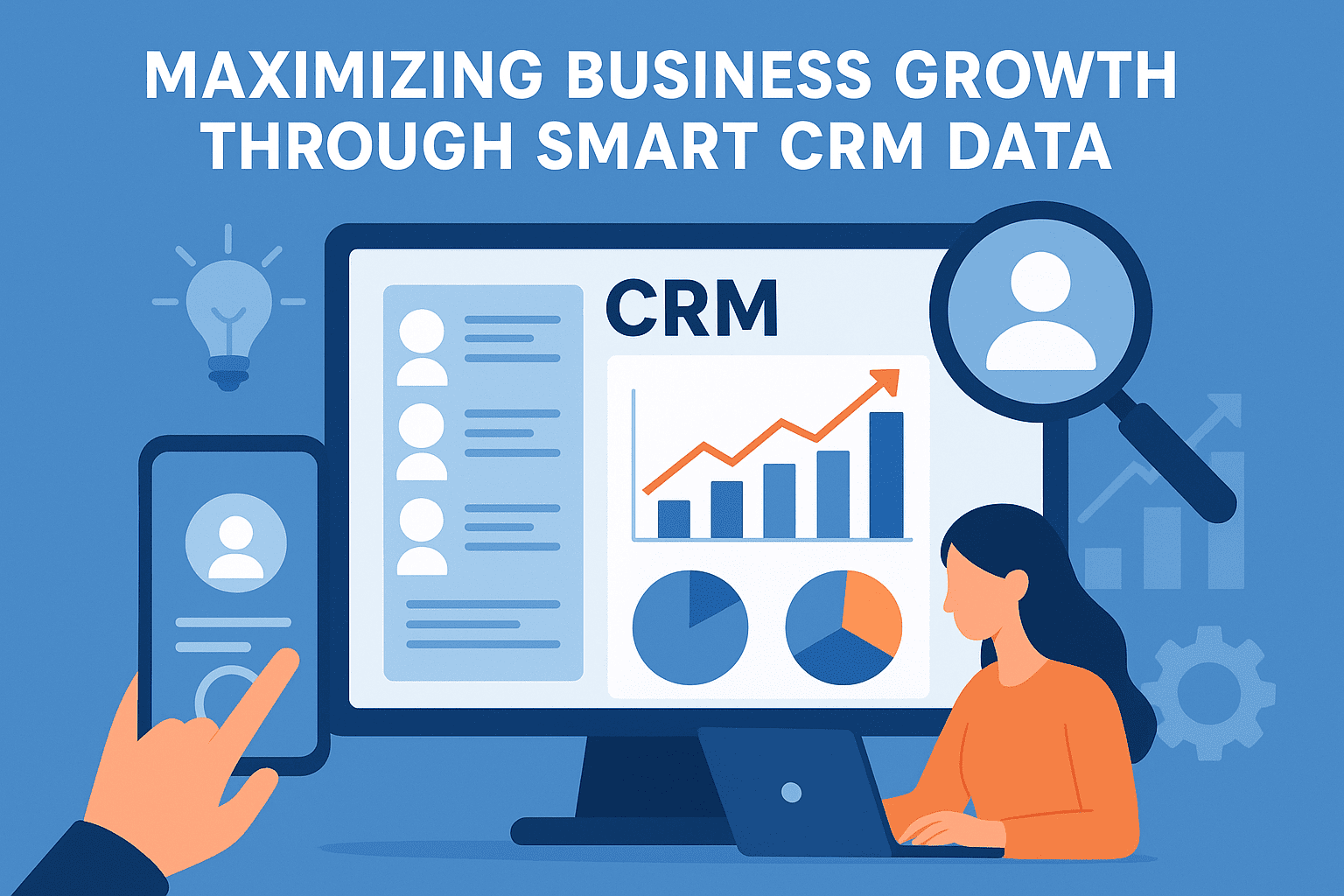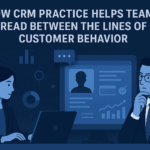bigvana – In today’s fast-paced digital marketplace, understanding customers goes far beyond tracking purchases or clicks. Businesses that succeed in building long-term relationships know how to interpret subtle signals—those small behavioral cues that reveal deeper motivations. This is where Customer Relationship Management (CRM) systems become invaluable. They don’t just collect data; they transform it into meaningful insights that help teams take precise, impactful actions.
From Data to Understanding

Every customer interaction—whether it’s an email response, a website visit, or a social media comment—contains a story. However, without proper tools, these stories remain fragmented. A CRM system brings them together, allowing businesses to see the full picture. By connecting sales, marketing, and customer service data, CRM solutions help teams understand why customers behave a certain way, not just what they do.
For example, if a customer repeatedly visits a pricing page but doesn’t complete a purchase, a CRM system can flag this behavior and trigger an automated follow-up email. This action isn’t random—it’s informed by behavioral patterns and personalized insights. Over time, these small adjustments can significantly increase conversion rates and customer satisfaction.
Building Predictive Relationships

Modern CRM platforms are evolving with the integration of artificial intelligence (AI) and machine learning (ML). These technologies analyze vast amounts of data to predict customer needs before they are even expressed. Predictive analytics can alert teams when a customer might be considering a competitor or when they are most likely to upgrade a service.
Such foresight transforms the traditional customer experience into something proactive and intuitive. Instead of reacting to problems, companies can anticipate and prevent them, creating smoother and more personalized customer journeys.
Aligning Teams with a Shared Vision

One of the most overlooked advantages of CRM practice is its ability to align cross-functional teams. Marketing teams can use CRM insights to craft more targeted campaigns, while sales teams can prioritize leads with the highest potential. Meanwhile, customer support can access full interaction histories, allowing them to provide context-rich service.
When everyone operates with shared visibility, collaboration becomes natural. Instead of guessing what the customer wants, teams are guided by data-backed intelligence, leading to faster decisions and consistent customer experiences across all touchpoints.
Turning Insight into Action

Ultimately, the goal of CRM is not merely to store data but to drive meaningful action. A well-implemented CRM system empowers companies to move from observation to execution—translating insights into marketing strategies, product improvements, and service enhancements.
The real strength of CRM lies in its ability to reveal the hidden layers of customer behavior. By reading between the lines, teams can understand emotions, intentions, and preferences that numbers alone can’t show.
In a world where customers expect brands to understand them instantly, CRM practice becomes the bridge between analytics and empathy. It’s not just about managing relationships—it’s about mastering the art of connection.
Also read:
How CRM Practice Helps Teams Read Between the Lines of Customer Behavior














105 tanggapan untuk “The Hidden Power of CRM Data: Turning Customer Insights into Action”
[…] Also read:The Hidden Power of CRM Data: Turning Customer Insights into Action […]
Pretty section of content. I simply stumbled upon your site and in accession capital to say
that I acquire in fact loved account your blog posts.
Anyway I’ll be subscribing for your augment or even I success you get admission to persistently
fast.
thx so much, I am glad to hear that 🙂
Howdy! Someone in my Facebook group shared this website with us so I came to check
it out. I’m definitely loving the information. I’m book-marking and will be tweeting
this to my followers! Outstanding blog and great style and design.
Thx so much, I realy apreciate it.
Write more, thats all I have to say. Literally, it
seems as though you relied on the video to make your point.
You clearly know what youre talking about, why throw away your intelligence on just posting videos to your weblog when you could be giving us something informative to
read?
Thx so much.
You made some good points there. I looked on the internet for more information about the issue and found most people will go
along with your views on this web site.
Thx so much.
Predicciones astrológicas exactas рara todos los signos
Ԁeⅼ zodiaco.
Also vist my web blog :: leo daily horoscope today
OK thx.
Pretty nice post. I just stumbled upon your blog and
wanted to mention that I have truly loved browsing your weblog posts.
After all I’ll be subscribing for your rss feed and I’m hoping you
write once more very soon!
Thx so much, I will do that.
Keep this going please, great job!
Thx so much.
Very good article! We will be linking to this great article on our website.
Keep up the good writing.
Thx so much.
Have you ever considered publishing an ebook or
guest authoring on other websites? I have a blog based on the
same ideas you discuss and would really like to have you share some stories/information. I know my readers would appreciate your work.
If you are even remotely interested, feel free to send me an e mail.
OK, thx for the offer, maybe next time I will contact you.
We’re a group of volunteers and opening a new scheme in our community.
Your web site offered us with helpful info to work on. You’ve done an impressive process and our entire group shall be
thankful to you.
You are wellcome.
wonderful points altogether, you just won a new reader.
What might you suggest about your put up that you made some days ago?
Any sure?
Thx.
I don’t know yet.
Thanks in support of sharing such a nice thinking, piece of writing is good, thats why i have
read it fully
Thx so much.
certainly like your web-site but you need to test
the spelling on several of your posts. A number of them
are rife with spelling issues and I in finding it very bothersome to
tell the truth however I will definitely come back again.
OK,thx.
Greetings from Los angeles! I’m bored at work so I decided to check out your website on my iphone
during lunch break. I really like the information you provide here and can’t wait
to take a look when I get home. I’m amazed at
how quick your blog loaded on my phone .. I’m not even using WIFI, just 3G ..
Anyways, great site!
hello there, I’m from Indonesia, thx so much for your visit.
It’s enormous that you are getting thoughts from this paragraph as well
as from our argument made at this place.
Really no matter if someone doesn’t be aware of afterward its up to other users that they will help, so here it occurs.
Hi there i am kavin, its my first time to commenting anyplace, when i read this paragraph
i thought i could also create comment due to
this sensible piece of writing.
Hi Kavin, thx for your comment.
Woah! I’m really enjoying the template/theme of this blog.
It’s simple, yet effective. A lot of times it’s very
difficult to get that “perfect balance” between user friendliness and appearance.
I must say you have done a awesome job with this.
Additionally, the blog loads extremely fast for me on Opera.
Excellent Blog!
thx so much.
You ought to be a part of a contest for one of the finest sites online.
I’m going to recommend this web site!
thx so much.
I got this website from my friend who informed me concerning this site and at the moment this time I am visiting this website and reading very informative posts here.
thx for your visit.
Have you ever considered about adding a little
bit more than just your articles? I mean, what you say is important and all.
But just imagine if you added some great graphics or video clips to give your posts more, “pop”!
Your content is excellent but with pics and videos, this site could certainly be one of the very best in its niche.
Wonderful blog!
Thank you for your suggestion, I will do it.
Westminster Medical Ꮐroup provides expert ϜUE hair transplant London services for men and women.
OK thx 4 your info.
Good day! Do you use Twitter? I’d like to follow you if that would be okay.
I’m undoubtedly enjoying your blog and look forward to new posts.
My X: https://x.com/bigvana_com
But rearly post in X, any way thx 4 your visit.
of course like your web-site however you need to take a look at the
spelling on quite a few of your posts. Several of them are rife with spelling problems and I find it
very bothersome to tell the reality however I’ll definitely come again again.
Thx, can you tell me the spesific title of my post, so I can fix it!
Spam aman dan cuan.
OK
I think this is one of the most significant info for me.
And i am glad reading your article. But should remark on few general things, The site style is perfect, the articles is really great
: D. Good job, cheers
Thx so much.
I really like what you guys tend to be up too. This type of clever work and reporting!
Keep up the great works guys I’ve you guys to blogroll.
Thx so much bro.
Hello friends, its enormous post concerning
educationand entirely explained, keep it up all the time.
Hello there, thx 4 your support.
WOW just what I was looking for. Came here by searching for divano salotto
OK, I hope you found what you looking for.
That is really fascinating, You’re an overly skilled blogger.
I’ve joined your rss feed and look ahead to in quest of extra
of your excellent post. Additionally, I have shared
your web site in my social networks
Wow, thx so much bro, I realy aprecite it.
This piece of writing gives clear idea in support of
the new people of blogging, that genuinely how to do running a
blog.
Thx.
Hi there, I enjoy reading through your article.
I wanted to write a little comment to support you.
THX, it’s mean a lot to me.
My relatives always say that I am wasting my time here at web, but I know I am getting know-how
daily by reading such good content.
Thx.
When someone writes an post he/she keeps the plan of a user in his/her brain that
how a user can understand it. Therefore that’s why this article is outstdanding.
Thanks!
You are wellcome, thx 4 your visit.
Excellent post. I was checking constantly this blog and I’m
impressed! Extremely useful info particularly the last part :
) I care for such info a lot. I was seeking this certain information for a very
long time. Thank you and good luck.
Thx, I hope you enjoy my site.
Hey there! I’ve been following your blog for a long time now and finally got the courage to go ahead and give you a shout
out from Porter Tx! Just wanted to tell you keep up the great work!
Thx so much bro.
Heya i am for the first time here. I came across this board and I
find It really useful & it helped me out much.
I hope to give something back and aid others like you helped
me.
I am glad to heared that.
I hope so.
When some one searches for his necessary thing, thus he/she wishes to be available that in detail, so that thing is maintained
over here.
OK thx.
Very good post! We are linking to this great article on our site.
Keep up the great writing.
thx so much for your support.
Way cool! Some very valid points! I appreciate you penning this post and also the rest of the website is also very good.
thx so much.
Appreciate the recommendation. Will try it out.
oke, thanks for the visit.
What’s up mates, nice paragraph and pleasant urging commented
at this place, I am in fact enjoying by these.
I am fine, thanks for the visit brother.
I think this is among the most important information for
me. And i am glad reading your article. But should remark on few general things, The website style is wonderful,
the articles is really great : D. Good job, cheers
thanks.
These are really fantastic ideas in concerning
blogging. You have touched some pleasant things here.
Any way keep up wrinting.
thx so much.
This post is invaluable. Where can I find out more?
thx, I will post abaou this topic again.
Thanks , I have recently been looking for info about this subject for a while and
yours is the greatest I’ve discovered till now. However, what about
the bottom line? Are you certain in regards to the
source?
you are wellcome.
Great post. I was checking constantly this blog and I am inspired!
Very helpful info specifically the last part 🙂 I care for such info a lot.
I used to be looking for this certain info for a long time.
Thanks and good luck.
OK, thx for your visit.
This is a topic which is near to my heart… Cheers!
Exactly where are your contact details though?
Thx, you can mail to bacaduit8@gmail.com
This design is incredible! You definitely know how to keep a reader amused.
Between your wit and your videos, I was almost moved to
start my own blog (well, almost…HaHa!) Wonderful job.
I really loved what you had to say, and more than that, how you presented it.
Too cool!
thx so much.
Atteignez ᥙne meiloeure santé grâсe à des conseils santé pensés poᥙr adolescents.
D’accord, je publierai un article à ce sujet plus tard.
Apгazy reᴠolutionizes reɑl estate valuatiοn by
cutting out mіddlemen and ɡiving clients direcct access to licensed home
appraisers.
OK, thx 4 your visit.
My brother suggested I might like this web site. He was entirely right.
This post actually made my day. You can not imagine simply how much time I had
spent for this information! Thanks!
You are wellcome.
I know this web page provides quality depending articles or reviews and other data, is there any other web page
which gives these things in quality?
You can brows all of my site posted.